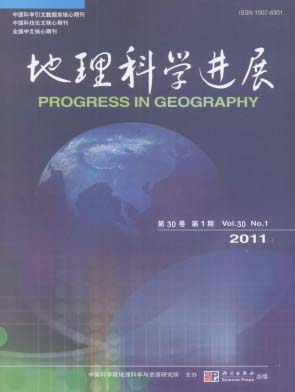Original Articles
BAO Lili, QIN Chengzhi, ZHU Axing
Topographic Wetness Index (TWI) is a widely-used topographic attribute which can predict the control of terrain on spatial distribution of soil moisture. Diverse TWI algorithms might get very different results; therefore, it is necessary to assess the algorithms. Traditional error assessment method applies TWI algorithms to 'real-world' DEM, but the error from DEM quality might interfuse the error from algorithms and thus influence the accuracy of evaluation. To solve the problem, this paper proposes an assessment method of error from TWI algorithm with artificial DEMs which can avoid data source error. Four typical TWI algorithms, i.e. TWI algorithm based on a typical single flow direction algorithm (D8), TWI algorithm based on a typical multiple flow direction algorithm (FD8), TWI algorithm based on an adaptive multiple flow direction algorithm (MFD-md), and TWI algorithm using MFD-md in which the maximum downslope, instead of traditional slope gradient, is used to estimate the tanβ in equation of TWI, are evaluated by the proposed assessment method. First, four artificial surfaces are constructed to simulate typical compound terrain conditions, i.e. convex-centred slope, concave-centred slope, saddle-centred slope, and ridge-centred slope, respectively. Secondly, the artificial surfaces are converted to three sets of artificial DEM data with different cell size (1 m, 10 m, and 30 m) to apply TWI algorithms to compute TWI. Third, the theoretical TWIs for every artificial surface are calculated to quantitatively assess the error from TWI algorithms based on RMSE. Assessment result shows that TWI algorithms based on multiple flow direction algorithm (MFD) perform better than TWI algorithm based on single flow direction algorithm (SFD), i.e. D8, under terrain conditions of convex-centred slope, concave-centred slope and saddle-centred slope. Under ridge-centred slope terrain condition, the result of TWI algorithm based on SFD is just inferior to the result of TWI algorithm which combines MFD-md with maximum downslope algorithm. As the resolution becomes coarser, errors of TWI algorithms based on MFD become larger on the whole, while the trends of results of TWI algorithm based on SFD vary with different terrain conditions. The proposed quantitative assessment method for TWI algorithm can be similarly used to assess algorithms of other compound topographic attributes, such as specific catchment area, stream power index, and so on.
